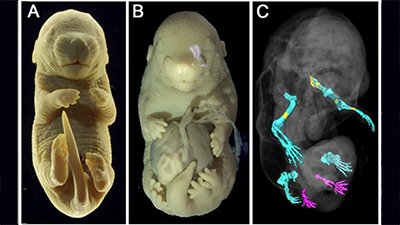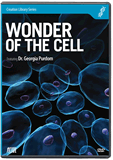The RNA-Way From Molecules-to-Man Remains Muddled
The RNA-way from molecules-to-man remains mired by its complete lack of information.
News Sources
- PhysOrg.com: “RNA Reactor Could HaveSserved as a Precursor of Life”
- Ars Technica: “Origin of Life: Enzyme-Free Copying of RNA”
Two studies from Germany have proposed ways RNA could have been the link between inanimate molecules and living microbes. Benedikt Obermayer’s Munich group has reported a computer simulation of “prebiotic RNA” in Physical Review Letters. Christopher Deck and colleagues from Stuttgart reported their work synthesizing RNA in Nature Chemistry. Both groups are trying to demonstrate how RNA molecules could have built and replicated themselves to transmit useful information.
The mystery of abiogenesis—getting life from non-life—is a major hurdle for evolution. Abiogenesis violates a basic principle of biology. Since living cells need both proteins and DNA to function and reproduce, evolutionary theorists have struggled with the problem of how one could have evolved without the other. RNA is an intermediary-of-sorts between DNA and proteins (able to carry out some enzymatic function and to transmit information), so the “RNA world hypothesis” paints a scenario in which the earliest life forms would have only required RNA. The discovery of bits of self-replicating RNA increased the popularity of the RNA world.
Efforts to synthesize self-replicating RNA strands long1 and varied enough to actually encode for a functional biochemical molecule have been unsuccessful. The Stuttgart group decided to immobilize an 8-base-strand of RNA and surround it with chemically-activated nucleotides and “micro-helper” pieces of RNA. They hoped such immobilized RNA strands would lengthen. Some RNA chains added 4 bases. Some, however, failed to copy correctly. Twelve bases is not long enough to code for functional molecules, but Deck considers the work a success. The group suggests that early life forms may have gotten by with simpler molecules. And although the experiment required pinning down the RNA starter strand with a bit of DNA, the group proposes early RNA got “adsorbed and immobilized on surfaces billions of years ago.”
The Munich group didn’t actually grow any RNA. They performed a computer simulation proposing a “natural” hydrothermal “RNA reactor” (i.e. porous rocks on the sea floor where nucleotides can accumulate in the pores and be exposed to strong temperature gradients) in which aggregates of nucleotides can randomly bond to build RNA. During normal transcription of RNA, only certain nucleotide pairings are stable. Therefore, in this computer-simulated reactor, randomly generated bits of RNA hybridized by matching up properly with other bits of RNA, thereby outlasting improperly paired molecules.
“Hybridization simultaneously protects a sequence motif and its complement from degradation,” Ulrich Gerland explained. “Thereby, it extends not only the lifetime of the sequence motif, but also the lifetime of its complement, which in turn can protect other copies of the sequence motif after dissociation.”
“This constitutes a form of information transmission between molecules, since it can conserve the information in the sequence motif beyond the lifetime of a single molecule,” Gerland concludes. “We show that a combination of simple physico-chemical mechanisms can greatly facilitate the spontaneous emergence of a prebiotic evolutionary system, such as envisaged by the RNA world.” (emphasis ours)
Even if the Stuttgart experiment with real molecules had been as successful as the computer simulation, the RNA sequence actually codes for nothing.
In both studies, a way was being sought to cobble together enough nucleotides to code for something useful and to self-replicate that information. Both took advantage of the ordinary rules of chemistry in which the likelihood of a reaction happening is increased if the molecules collide with each other more often. Even if the Stuttgart experiment with real molecules had been as successful as the computer simulation, the RNA sequence actually codes for nothing.
The Munich group claims information was preserved, but no information existed. Only copies of nonsensical random RNA sequences were preserved. Genuine information must have meaning. The genetic code in a cell is information because it can be translated into something useful, each section of the genome acting as a code to assemble proteins or to regulate those processes. Random sequences of RNA may outlast other random sequences, but they still hold no information. The law of biogenesis remains as much an obstacle to evolution as ever.
Further Reading
For More Information: Get Answers
Remember, if you see a news story that might merit some attention, let us know about it! (Note: if the story originates from the Associated Press, FOX News, MSNBC, the New York Times, or another major national media outlet, we will most likely have already heard about it.) And thanks to all of our readers who have submitted great news tips to us. If you didn’t catch all the latest News to Know, why not take a look to see what you’ve missed?
(Please note that links will take you directly to the source. Answers in Genesis is not responsible for content on the websites to which we refer. For more information, please see our Privacy Policy.)
Footnotes
- Christopher Deck, Mario Jauker, and Clemens Richert, “Efficient Enzyme-Free Copying of All Four Nucleobases Templated by Immobilized RNA,” Nature Chemistry 3 (July 10, 2011): 603–608, doi:10.1038/nchem.1086.
Recommended Resources

Answers in Genesis is an apologetics ministry, dedicated to helping Christians defend their faith and proclaim the good news of Jesus Christ.
- Customer Service 800.778.3390
- © 2025 Answers in Genesis






